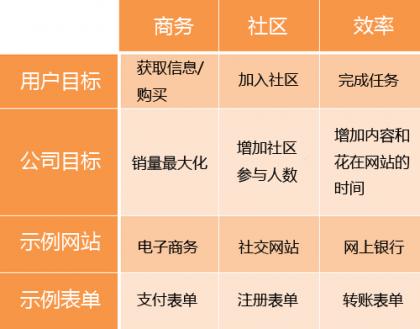表單可用性緣何重要?
The ISO 9241 standard defines website usability as the “effectiveness, efficiency and satisfaction with which specified users achieve specified goals in particular environments.” When using a website, users have a particular goal. If designed well, the website will meet that goal and align it with the goals of the organization behind the website. Standing between the user’s goal and the organization’s goals is very often a form, because, despite the advances in human-computer interaction, forms remain the predominant form of interaction for users on the Web. In fact, forms are often considered to be the last and most important stage of the journey to the completion of goals.
ISO 9241標(biāo)準(zhǔn)中對網(wǎng)站可用性的定義是:特定用戶在特定環(huán)境下����,能夠快速、有效且滿意地完成特定的目標(biāo)���。用戶使用網(wǎng)站都是有目標(biāo)的���。 如果設(shè)計得好����,網(wǎng)站不但會達(dá)到用戶的目標(biāo)�����,還會將其與自身公司的目標(biāo)聯(lián)系起來���。介乎用戶目標(biāo)和公司目標(biāo)之間的往往就是表單
��,因為��,盡管人機(jī)交互發(fā)展迅速���,表單仍然是用戶與網(wǎng)站交互的主要方式。實際上���,表單經(jīng)常被認(rèn)作是完成目標(biāo)的最后也是最重要的一站���。
Let’s clarify this last point by discussing the three main uses of forms. As Luke Wroblewski states in his book Web Form Design: Filling in the Blanks, every form exists for one of three main reasons: commerce, community or productivity. The following table translates each of these reasons into the user and business objectives that lie behind them:
讓我們通過討論表單的三個主要作用來闡述下最后這一點。就像Luke Wroblewski在他的《web表單設(shè)計:點石成金的藝術(shù)
》一書中說的一樣,每個表單的存在必有如下三個原因之一:商務(wù)��、社區(qū)或效率��。下面的表單把這三個原因轉(zhuǎn)化成了其背后的用戶目標(biāo)和公司目標(biāo):


